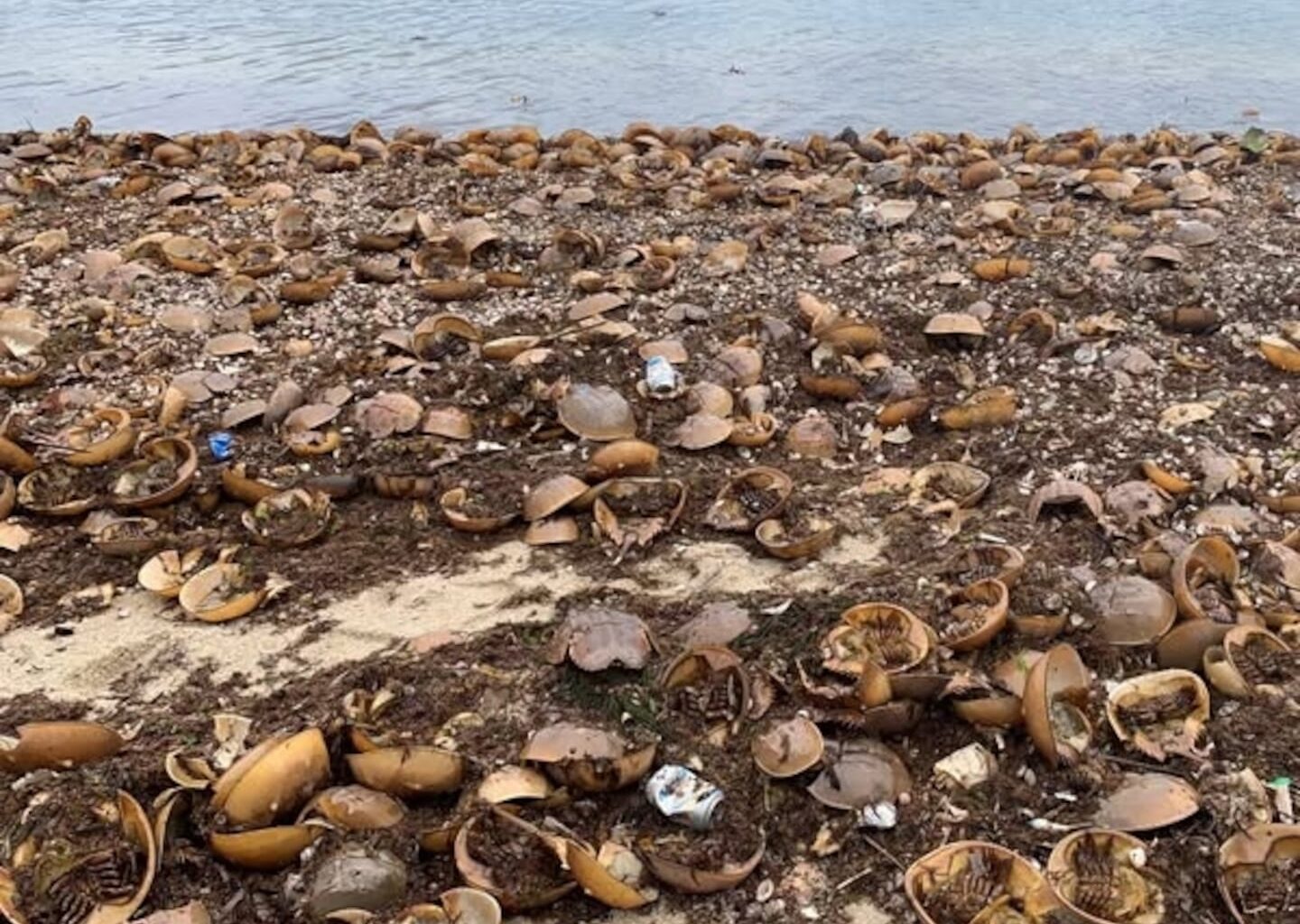In one photo of a beach in Falmouth, at least 100 of the arthropod shells litter the beach, stretching all the way to the water.
Officials said a number of the cast-off shells are also washing up in Weymouth and Nahant.
Kristen Malia, an employee at the Beach Breeze Inn in Falmouth, said there are “at least a dozen” shells on Falmouth Beach.
“We’ve seen guests grab a few,” she said Friday. “The guests think they’re pretty cool … we haven’t had anyone complain about it.”
Officials said late summer and early fall is the “peak” of molting season for horseshoe crabs.
“We expect the number of molted shells on Massachusetts beaches to increase over the next few weeks,” officials said. “To tell the difference between a dead crab and a molt, look for a slit along the front rim of the shell.”
Horseshoe crabs, who have been around for about 445 million years (dinosaurs appeared more than 200 million years ago), are around two feet long and live as long as 18 years, according to the Maryland Department of Natural Resources.
The arthropods serve several useful purposes for scientists, most importantly in testing whether vaccines are safe to administer to humans.
Because their blood naturally clots around harmful bacteria, horseshoe crabs are used to test whether vaccines are contaminated, the Globe reported last year.
Before the creatures reach sexual maturity, which occurs at around age 11, horseshoe crabs molt approximately 16 to 17 times, officials said.
Once they are mature, the crabs no longer molt.
Truman Dickerson can be reached at truman.dickerson@globe.com.

